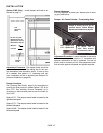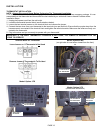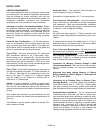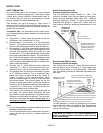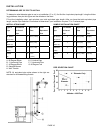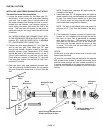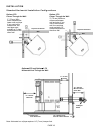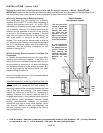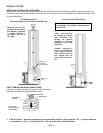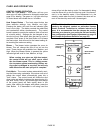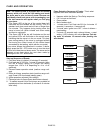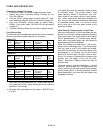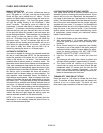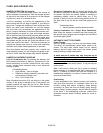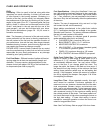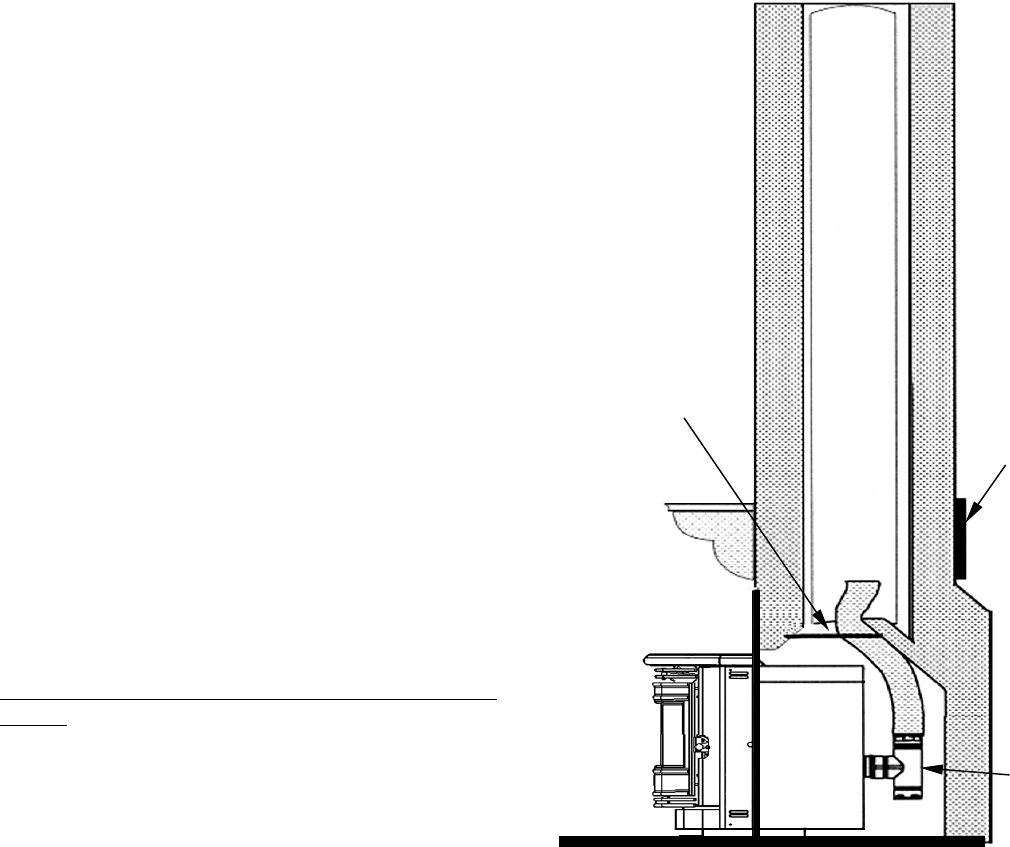
INSTALLATION - Optima 3 INS
Standard Installation Configurations Into and Existing Fireplace – Model: Optima
3 INS
IMPORTANT- Make sure the chimney and firebox are clean and free of soot and ashes before installation begins. Fail-
ure to do so may result in the transfer of soot into the room by way of the room air blower.
♦ USA & Canada – Requires an approved noncombustible hearth or floor protector, 3/8” / (10 mm) millboard
or equivalent (k = .84, r = 1.19) to extend 6” / 150 mm to the front of the glass door.
PAGE 20
(USA only) Venting Into an Existing Chimney
This pellet insert may be installed into a masonry
fireplace (built to UBC 37 or ULC S628 standards) or
a factory built fireplace (built to UL 127 or ULC S610
standards) as illustrated on this page. When installing
into a masonry chimney, it is recommended that the
exhaust vent be extended to the top of the chimney
as shown on the following page. However, if the vent
pipe does not extend to the top of the chimney, the
vent must extend a minimum of 18” above the
damper. You must seal the damper area so that the
air / exhaust in the chimney cannot communicate with
the air in the fireplace firebox (this is a positive flue
connection. See the following instructions for one
method of sealing flue).
(USA & Canada) Direct Connection / Positive Flue
Connection
In Canada, this appliance requires a full reline when
installing into a masonry fireplace. In the USA, as a
minimum the vent connector from the insert flue out-
let must extend a minimum of 18” above the damper
and the damper area must be sealed to prevent dilu-
tion air from entering the chimney which will affect
proper drafting of appliance.
See the following instructions for acceptable methods
for sealing chimney throat.
Approved Methods of Achieving a Positive Flue Con-
nection - A qualified installer should evaluate the ex-
isting fireplace to determine the best method for
achieving a positive flue connection between the vent
pipe or liner and the chimney. The most common
method for achieving a positive flue connection in
masonry fireplaces is to secure a seal-off plate (i.e.
22-gage sheet steel) in the fireplace throat using ma-
sonry screws. Other acceptable methods include
packing noncombustible material (i.e. rockwool)
around the vent pipe or using a flue adapter. What-
ever “seal off” method is used must effectively seal
the area to prevent room air passage to the chimney
cavity of the fireplace.
Direct Connection
(not allowed in Canada)
The vent pipe must
extend a minimum
of 18" above the
damper. The chim-
ney must not be
corroded or dam-
aged in any way fo
r
this type of installa-
tion to be permitted.
A non-combustible
seal is required at
the damper area (to
prevent dilution ai
r
from entering the
chimney). See Posi-
tive Flue Connection
Methods on this
page.
Optional
Access
Door
Clean-
out
Tee



